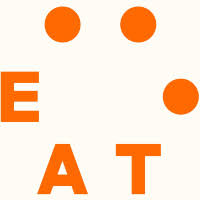
InSEEDS @EAT Stockholm Food Forum 2025
Join us for planetary human-earth modelling of regenerative pathways

Regenerative agriculture, climate adaptation, food security or nature's contributions to people. Understand intertwined challenges.
Learn moreWEMs connect human decisions with Earth system feedbacks. Unlike ESMs, they model society and nature as co-evolving.
Read moreSimulate land use, management practices, or social-ecological challenges? Try InSEEDS or write your own model!
See how it workscopan:LPJmL uses LPJmL for a detailed representation of the terrestrial biosphere.
LPJmL is a dynamic global vegetation model that simulates the
carbon, nitrogen, water and energy cycles in conjunction with the
growth and productivity of natural and agricultural ecosystems.
These are driven by climate, land use, or other globally gridded
input data.
It can represent a wide range of agricultural management systems, its impacts simulated by the process-based richness of LPJmL.



copan:CORE defines the hierarchy, design principles and interfaces applied in copan:LPJmL.
It provides entities to represent human societies, economies, and their interactions with the Earth system.
Flexibly compose biophysical, socio-metabolic, and sociocultural processes involving different entities.

pycoupler enables a bidirectional annual data coupling with LPJmL for Python environments.
copan:LPJmL integrates pycoupler into the CORE hierarchy featuring World as the entire simulation space and Cell as the smallest simulation unit.

from pycoupler import read_config
from pycoupler import submit_lpjml
config_coupled = read_config(
model_path="./LPJmL",
file_name="lpjml_config.cjson"
)
config_coupled.set_coupled(
sim_name="coupled_run",
start_year=2001, end_year=2100,
coupled_year=2023,
coupled_input=["with_tillage"],
coupled_output=["soilc", "harvestc"]
)
config_coupled_fn = config_coupled.to_json()
submit_lpjml(config_file=config_coupled_fn)
Model simulations can be configured and run with a few lines of code …
It needs a compiled LPJmL version > 5.9 and a Python environment with
an installed pycopanlpjml library.
LPJmL can send all available outputs such as soil carbon (soilc) or crop yield (harvestc) and receive all available inputs such as tillage application (with_tillage) via the interface.
The example on the right is from the model setup of the InSEEDS model, where farming agents can decide on whether to apply tillage or not based on the status of soilc and harvestc.
This way achieving closed feedback loops of social-ecological systems.
Use the base entities copan:CORE provides and set up new entities that are needed for your projects, for example farmers.
These can then be filled with processes like management changes based on attitude formation towards own land.
Farmers can always access the LPJmL outputs & inputs of their cell to base their attitude on the soil carbon content and the crop yield.
In a later process, the farmers can decide on whether to apply tillage or not and change the corresponding input (with_tillage) to LPJmL.
class Farmer(Individual):
def attitude_own_land(self):
self.soilc = self.cell.output.soilc.values[0]
self.cropyield = self.cell.output.harvestc.values.mean()
attitude_soil = (self.soilc - self.soilc_past) / self.soilc_past
attitude_yield = (self.cropyield - self.cropyield_past) / self.cropyield_past
return sigmoid(
self.weight_yield * attitude_yield
+ self.weight_soil * attitude_soil
)

Several models have already been built with copan:LPJmL, for example:
InSEEDS, an agent-based socio-ecological model to simulate spreading of regenrative agriculture practices such as conservation tillage.
Crop Calendar, after Minoli et al. (2022), a rule-based model to calculate shifts in the planting date of crops based on climate variations
LLM-fertilization, a model in which an LLM is coupled to LPJmL to simulate the fertilization decisions of farmers with an example use case of Togo.
The advanced World-Earth modeling framework
The copan:CORE framework; entities, taxonomies, and core concepts
The Lund-Potsdam-Jena managed Land model (LPJmL)
dynamic model coupling of LPJmL
Model of integrated social-ecological resilient land systems
Crop calendar, LLM fertilization, and more
Examplaric models for copan:CORE
Industrialised agriculture has contributed to ecological degradation and planetary boundary transgressions, while being increasingly affected by climate change. Sustainable approaches like Regenerative Agriculture offer promising alternatives, but most studies overlook the complex social-ecological dynamics underlying large-scale adoption. To address this gap, we introduce InSEEDS – a novel World-Earth model that couples LPJmL vegetation modeling with agent-based farmer decision-making. Distinguishing between traditionalist and pioneer farmer types, we analyze conservation tillage adoption dynamics and find that social networks and ecological heterogeneity play critical roles in transitions. Conservation tillage yields positive effects on soil carbon and crop yield, though outcomes are context-dependent.
We present an open-source software framework for developing so-called world–Earth models that link physical, chemical and biological processes with social, economic and cultural processes to study the Earth system’s future trajectories in the Anthropocene. Due to its modular structure, the software allows interdisciplinary studies of global change and sustainable development that combine stylized model components from Earth system science, climatology, economics, ecology and sociology.
In the Anthropocene, the social dynamics of human societies have become critical to understanding planetary-scale Earth system dynamics. The conceptual foundations of Earth system modelling have externalised social processes in ways that now hinder progress in understanding Earth resilience and informing governance of global environmental change. New approaches to global modelling of the human World are needed to address these challenges. We present taxonomies for structuring models for World–Earth systems analysis that enable the systematic development of models capable of simulating complex and entangled human–Earth system processes.